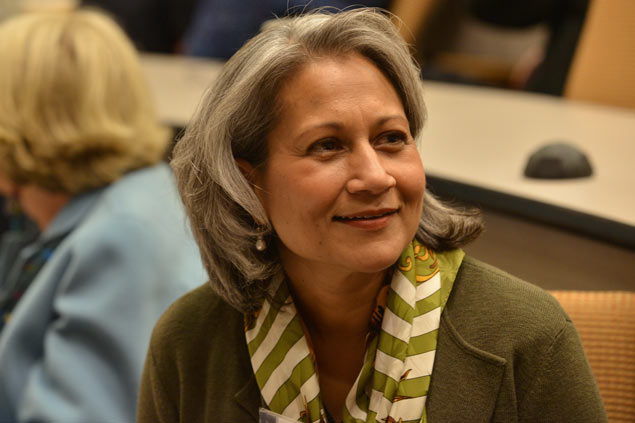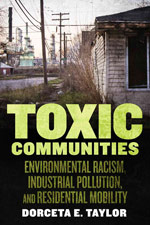 |
Laura Bishop (MPA ’99), Vice President of Public Affairs, Best Buy, Inc.
Oversees Best Buy’s global government affairs, corporate responsibility, and environmental sustainability initiatives. Goals include advancing sustainable products and services, reducing the company’s carbon footprint, and complying with environmental laws and regulations. Best Buy accepts electronics recycling at each of the company’s 1,400-plus stores and collects over 400 pounds per minute during business hours. Since 2009, when Best Buy launched the program, the company has diverted more than one billion pounds of electronics from landfills, sending them to environmentally and socially responsible third-party certified recyclers. “We do it because it’s the right thing to do and because our customers are looking for responsible ways to recycle electronics.”
 |
Eunice Burns (MPA ’70), Board Member, Huron River Watershed Council
Co-founded Huron River Day, which draws some 2,500 Ann Arborites annually to celebrate the Huron River, to learn about the importance of water quality, and to encourage cross-sector partnerships.
 |
Michael Green (MPP ’93), Founder and Executive Director of the Center for Environmental Health and recipient of the Compassion in Action Award from the Dalai Lama Foundation
Spent a decade systematically testing every child’s product sold in the U.S.—every baby powder, every toy, every bib, every kind of candy, every lunch box—for lead, then suing manufacturers to have it removed and helping to write legislation banning lead from children’s products. The goal: protecting the people who build these products and the children who use them.
Eric Lopez (MPP ’06), Tidelands Capital Improvement Officer, City of Long Beach, California
Leads restoration efforts for the Colorado Lagoon, a sensitive estuarine habitat and one of the few remaining coastal lagoons in southern California. A natural lowpoint in the watershed, the lagoon was once ranked among the ten most polluted coastal water bodies in California by Heal the Bay. Tens of thousands of cubic yards of sediment, contaminated with lead, copper, and pesticides, have since been dredged. A low-flow diversion system was added to direct dry season runoff to a sewage treatment facility. A native plant bioswale now filters water. And while there’s more work ahead, the lagoon is on the road to recovery.
Matt Naud (MPP ’90), Environmental Coordinator, City of Ann Arbor
Cleaning up lead, asbestos, gas leaks, and dozens of toxic chemicals through use of the Brownfield Redevelopment Financing Act. “Across Michigan, there are 8,000 leaking underground storage tanks that are polluting our waterways,” says Matt Naud. “Because of state law, cities have no real regulatory control, but brownfield cleanup programs give cities a good tool to encourage developers not just to pave over contaminated sites, but to remediate them.”
 |
Jeffrey Page (MPP ’04), Attorney Advisor, Office of Site Remediation Enforcement, U.S. Environmental Protection Agency
Identifying ways to apply the U.S. Environmental Protection Agency’s “Next Generation Compliance” principles to the Superfund program, which is designed to compel responsible parties to clean up abandoned hazardous waste sites. The goal: to apply new tools and thinking to Superfund cleanup efforts to drive compliance, reduce pollution, and improve enforcement results.
Daniel Steinborn (MPP ’71), grants management specialist (retired), U.S. Environmental Protection Agency
Spent 40 years administering significant water quality and environmental improvement programs in the Pacific Northwest and Alaska.
 |
Dorceta Taylor (Poverty and Policy Postdoctoral Fellow) Professor of Environmental Justice, U-M School of Natural Resources and Environment
Authored Toxic Communities: Environmental Racism, Industrial Pollution and Residential Mobility (New York University Press, 2014), which examines the environmental justice issues around discriminatory waste siting, and “The State of Diversity in Environmental Organizations,” a 200-page report released last summer. Believes that low-income people and people of color, “who have a living experience of being in communities touched by toxins,” can bring greater sensitivity and greater expertise to the environmental movement.
Lynn Vendinello (MPP ’89), Deputy Division Manager, Chemical Control Division, U.S. Environmental Protection Agency
Manages human resources, budgeting, and program planning for the 35-person Chemical Control Division of the EPA. The division is now reviewing state-level fracking-chemical disclosure information to determine if new federal rules could help to fill gaps.
Email [email protected] to share energy and environmental policy stories for our expanded online roundup.
Below is a formatted version of this article from State & Hill, the magazine of the Ford School. View the entire Spring 2015 State & Hill here.